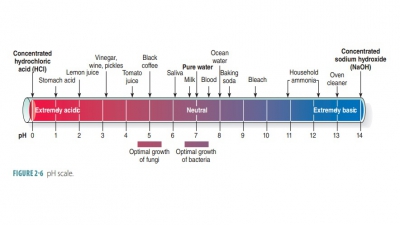Nucleic Acids
| Home | | Anatomy and Physiology | | Anatomy and Physiology Health Education (APHE) |Chapter: Anatomy and Physiology for Health Professionals: Levels of Organization : Chemical Basics of Life
Nucleic acids are large organic molecules (macro-molecules) that carry genetic information or form structures within cells.
Nucleic Acids
Nucleic acids
are large organic molecules
(macro-molecules) that carry genetic information or form structures within
cells. They are composed of car-bon, hydrogen, oxygen, nitrogen, and
phosphorus. Nucleic acids are actually the largest molecules in the body.
Nucleic acids store and process information at the molecular level inside the
cells. The two classes of nucleic acids are deoxyribonucleic
acid (DNA) and ribonucleic acid (RNA). Nucleic acids are found in allliving things, cells, and viruses.
Individual strands of DNA and RNA have a similar structure (FIGURE 2-14).

Nucleotides are the structural units of
nucleicacids. These complex units consist of a nitrogen- containing base, a
pentose sugar, and a phosphate group. The nucleotide structure is based on five
major types of nitrogen-containing bases:
■■ Adenine (A): A large,
two-ring base (purine)
■■ Guanine (G): Also a purine
■■ Cytosine(C): A smaller, single-ring base (pyrimidine)
■■ Thymine (T): Also a
pyrimidine
■■ Uracil (U): Also a pyrimidine
The DNA in our cells determines
our inherited characteristics, including hair color, eye color, and blood type.
DNA affects all aspects of body structure and function. DNA molecules encode
the information needed to build proteins. By directing structural pro-tein
synthesis, DNA controls the shape and physical characteristics of the human
body.
Several forms of RNA cooperate to
manufacture specific proteins by using the information provided by DNA.
Important structural differences distin-guish RNA from DNA. An RNA molecule
consists of a single chain of nucleotides. Human cells have three types of
RNA:
1.Messenger RNA (mRNA)
2.Transfer RNA (tRNA)
3.Ribosomal RNA (rRNA)

A DNA molecule consists of a pair
of nucleotide chains (FIGURE 2-15A ). The two DNA strands twist around each other in a double helix that
resembles a spiral staircase. TABLE 2-3 compares the characteristics of DNA and RNA.

1. List
three types of RNA.
2. Distinguish
between DNA and RNA.
3. What is
the structure of nucleotides?



